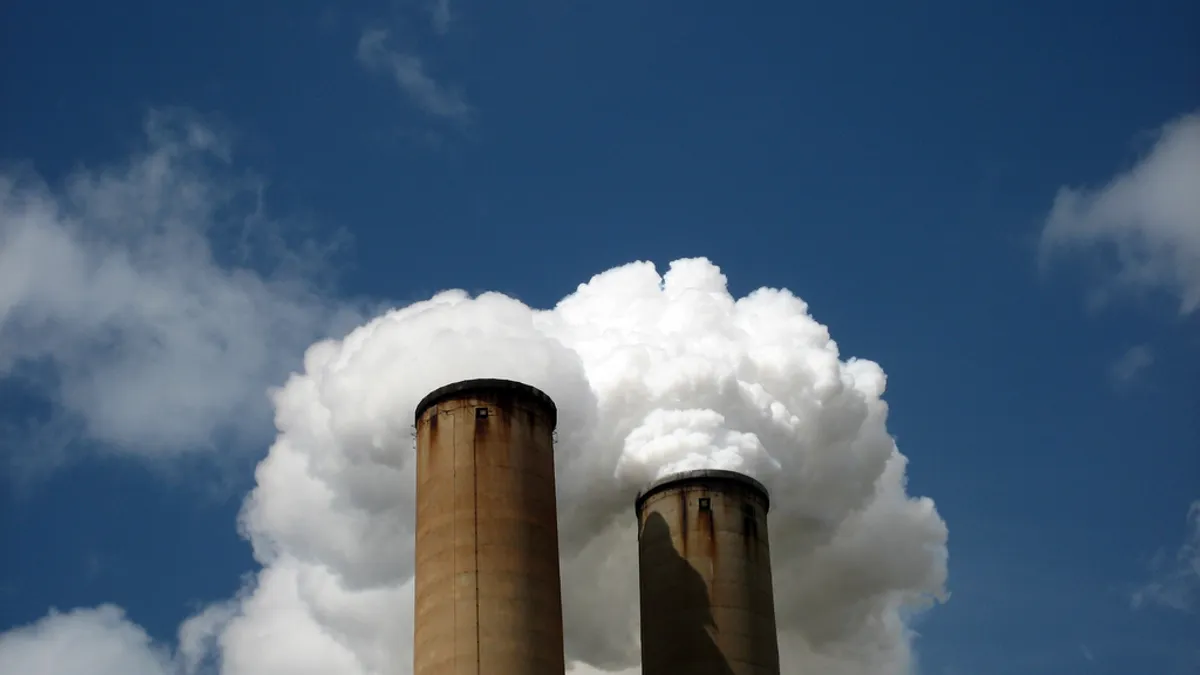Dive Brief:
- Two in five coal plants are running at a loss, according to a new report from financial think tank Carbon Tracker. And the situation will not improve for the out-of-favor fuel: by 2030, new wind and solar will be cheaper than almost all existing coal plants, according to the report.
- The firm says it analyzed the profitability of 6,685 coal plants worldwide, and published the results in a new "coal power economics portal" to help develop "economically rational plans to close coal plants and to understand the financial risk if they continue to operate."
- Globally, coal plants represent $267 billion in stranded asset risk, and the United States could save $78 billion by closing plants in line with the Paris climate accord, according to the firm's analysis.
Dive Insight:
The environmental case against coal power is familiar, but the fuel persists at least in part because it has traditionally been a low-cost option. That is rapidly changing as renewable energy prices fall and natural gas remains low. Carbon Tracker's report aims to help make the financial case for mothballing coal plants, as more and more are projected to lose money in the coming years.
Carbon Tracker says that in its business-as-usual scenario, which includes current environmental regulations, major coal capacity markets like China, the United States and the European Union, "become ever more cash-flow negative. ... This analysis highlights a power sector mega trend: with or without climate policy, coal power is increasingly a high-cost option."
Investors can save money, the report finds, by closing down coal plants in line with the Paris climate accord which aims to hold the increase in global temperature to less than 2 degrees Celsius above pre-industrial levels.
"The narrative is quickly changing from how much do we invest in new coal capacity to how do we shut down existing capacity in a way that minimizes losses," Matt Gray, head of power and utilities at Carbon Tracker and co-author of the report, said in a statement.
Gray said the firm's analysis provides "a blueprint for policymakers, investors and civil society" for closing down plants.
When it becomes cheaper to build new renewables and gas than to build new coal power — a point which has been reached in Europe, the U.S., India and some of Latin America — governments "should ban investments in new coal power," the firm advised in a statement.
At the Rocky Mountain Institute, Senior Fellow Bruce Nilles is making a similar argument.
"By 2020, coal will be gone from most of the country and concentrated in a handful of states," Nilles told Utility Dive in October. "The way to make progress in the remaining states is to make the cold hard economic case to regulators and customers that the high cost of coal-generated electricity is not good for business."
According to the Sierra Club, there are 249 coal plants operating in the U.S. — and 281 have already retired or are proposed to retire. More retirements are expected in 2019 and 2020, which Nilles said would leave about 150 GW.
"And it is important to replace [coal] with clean energy and not natural gas," he said.
Though utilities are largely phasing out the resource, the coal industry has not given up. Earlier this month, the Department of Energy announced it would fund competitive research and development of next-generation coal facilities, as part of the federal government's ongoing efforts to support the struggling coal industry.
The American Coalition for Clean Coal Electricity (ACCCE), which represents major coal producers, celebrated that announcement and said the group is "very supportive of demonstration technology of small, modular coal units."
ACCCE President and CEO Michelle Bloodworth told Utility Dive the DOE's funding is a "step in the right direction. ... We do need a coal fleet for the future, for reliability, resilience, affordability and diversity."














